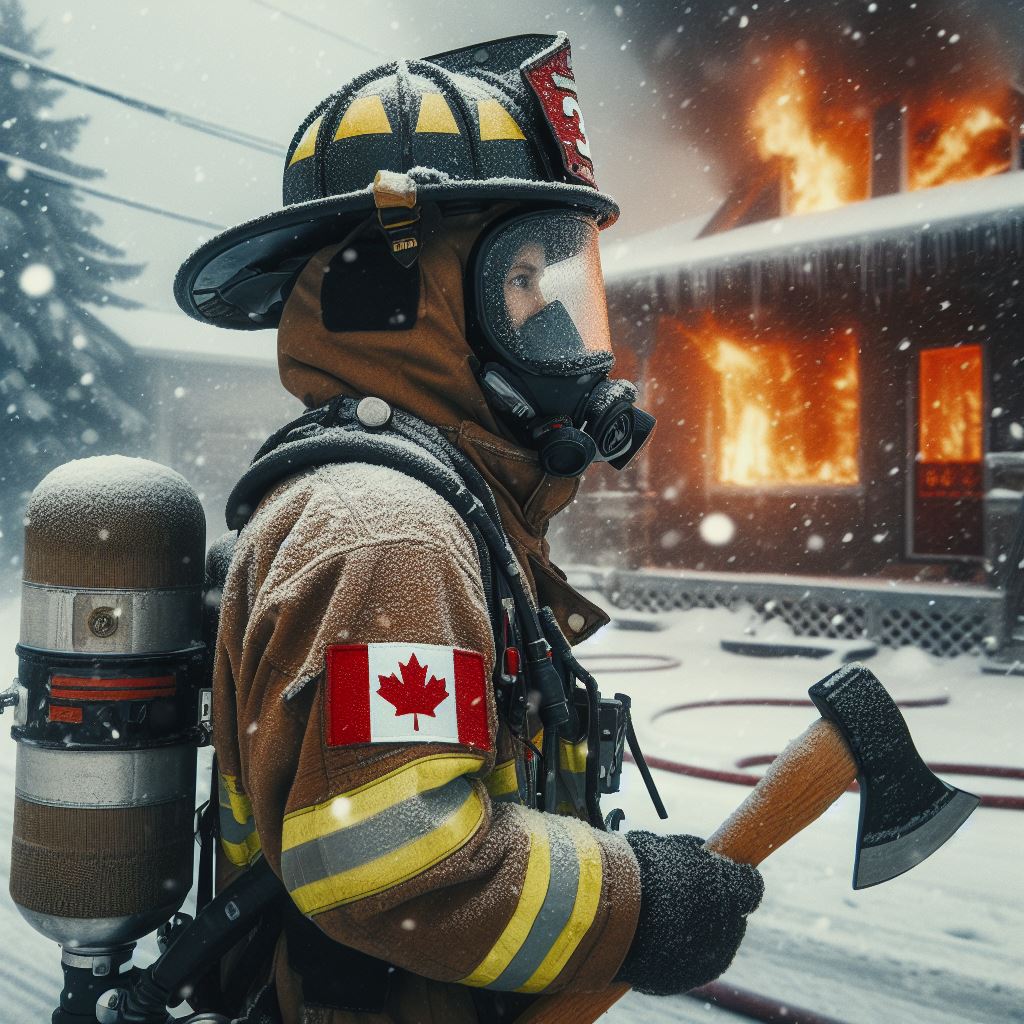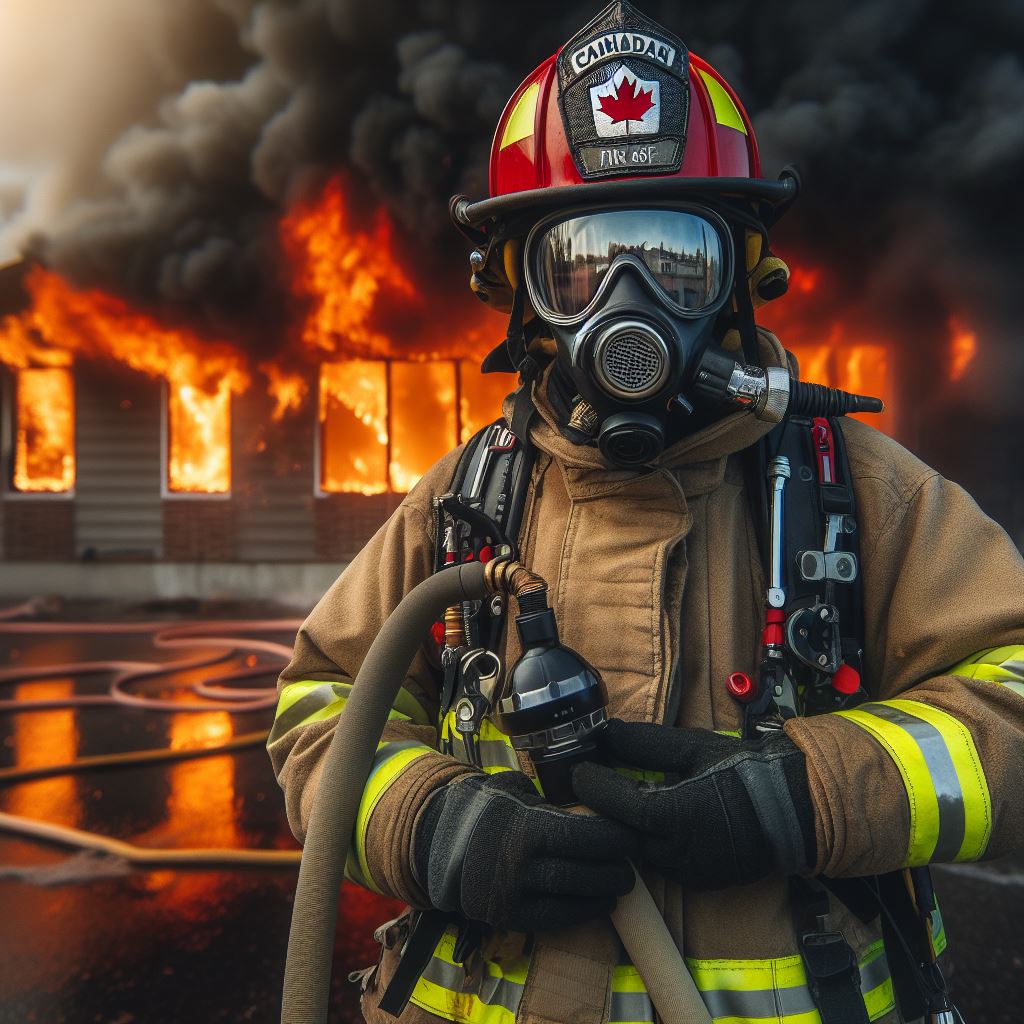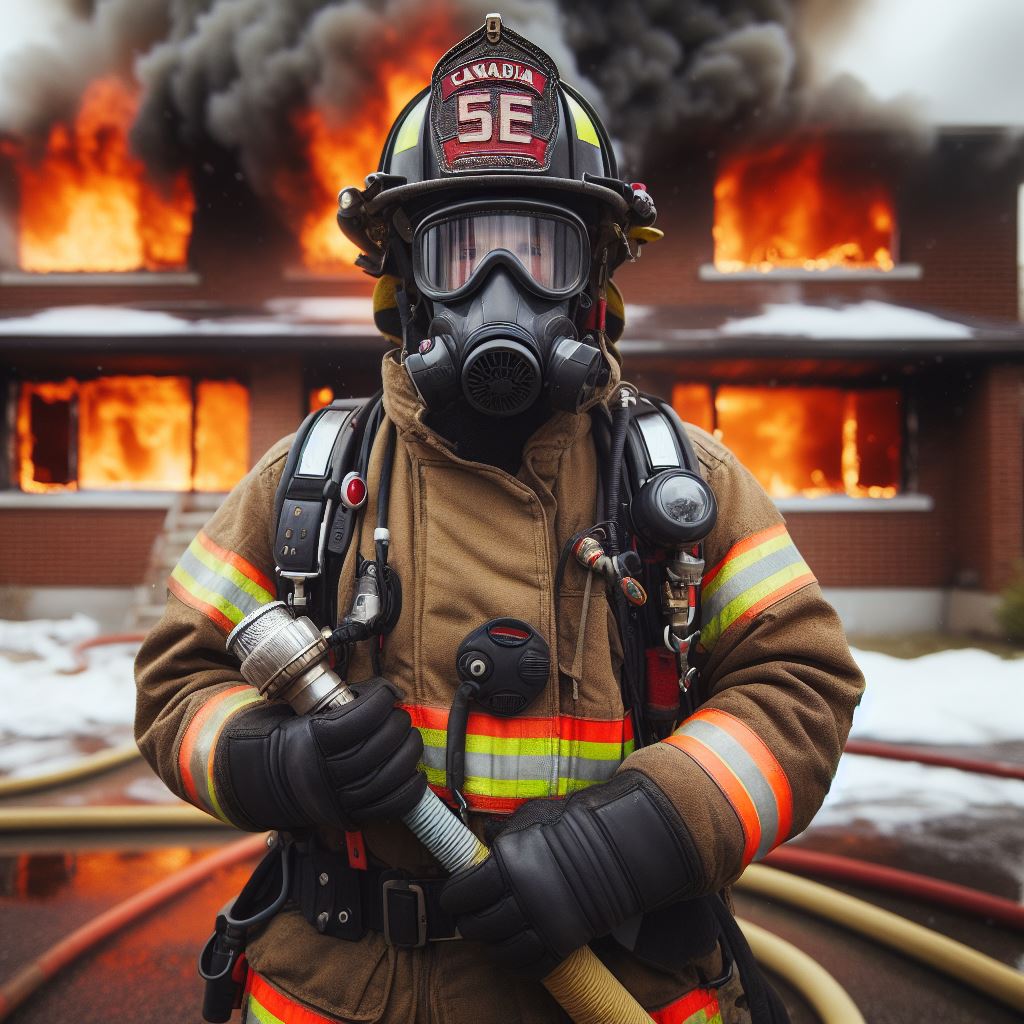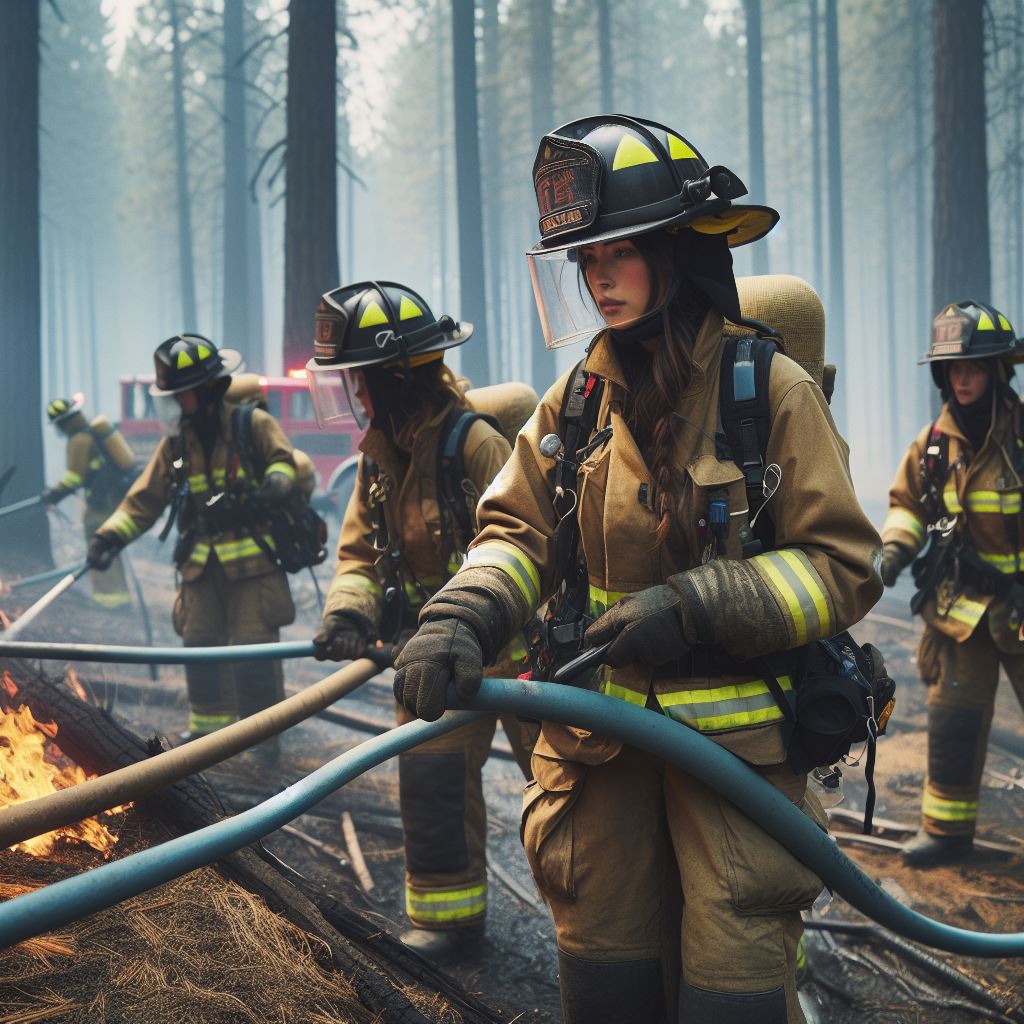Introduction
Wildfires in Canada can be severe, causing massive destruction to forests and posing a threat to communities.
Effective firefighting strategies are crucial in combating these destructive forces.
Wildfires in Canada are a serious problem, with thousands of hectares being destroyed annually.
The severity of wildfires in Canada cannot be underestimated, as they have the potential to cause significant damage to the environment and human lives.
Furthermore, these wildfires can spread rapidly and quickly become uncontrollable, threatening nearby communities.
It is imperative for Canada to have efficient firefighting strategies to combat these wildfires effectively.
Effective firefighting strategies are essential in minimizing the impact of wildfires by containing and extinguishing them.
By implementing appropriate strategies, firefighters can control the spread of wildfires and protect vulnerable areas.
Moreover, these strategies enable firefighters to prioritize their efforts, ensuring that resources are allocated effectively.
Preventive measures, such as controlled burns and forest management, are also crucial in reducing the severity of wildfires.
In fact, due to the severity of wildfires in Canada, it is vital to have effective firefighting strategies.
These strategies not only protect the environment but also safeguard communities from the devastating effects of wildfires.
Understanding Wildfire Behavior
Factors influencing wildfire behavior
- Fuel: The type, amount, and moisture content of vegetation play a crucial role in wildfire ignition and spread.
- Topography: Slope steepness, aspect, and shape influence the speed and intensity of wildfire spread.
- Weather conditions: Temperature, humidity, wind speed, and direction determine the behavior and direction of wildfires.
Different types of wildfires in Canada
- Ground Fires: These wildfires burn through the organic material on the forest floor, such as leaves and dead vegetation.
- Surface Fires: These wildfires spread along the ground and burn low-lying vegetation, like grass and shrubs.
- Crown Fires: The most dangerous type of wildfires, crown fires occur when flames spread rapidly among the tops of trees.
Role of weather conditions in wildfire spread
- Temperature: Higher temperatures increase the likelihood of ignition, dry out vegetation, and promote faster fire spread.
- Humidity: Low humidity levels contribute to drier vegetation, leading to easier ignition and more rapid spread of wildfires.
- Wind: Strong winds not only accelerate wildfire spread, but they also carry embers, causing spot fires ahead of the main fire front.
- Rainfall: Adequate rainfall can reduce the risk of wildfires by moisturizing vegetation, making it less susceptible to ignition.
- Lightning: Lightning strikes during thunderstorms are a significant cause of wildfire ignition, especially in remote areas.
Strategies for Combatting Wildfires in Canada:
Prevention
- Implementing strict fire bans during dry seasons to prevent human-caused wildfires.
- Conducting controlled burns to remove excess vegetation and reduce fuel buildup.
- Promoting public awareness and education on fire safety and responsible behavior in fire-prone areas.
Detection
- Utilizing advanced technologies, such as satellite imagery and infrared cameras, to detect wildfires early.
- Establishing a network of lookout towers and aerial patrols to quickly identify and report wildfires.
Suppression
- Mobilizing trained firefighting crews equipped with suitable gear and resources to contain and extinguish wildfires.
- Deploying firefighting aircraft, including water bombers and helicopters, to drop water or fire-retardant materials on the flames.
- Creating firebreaks by removing vegetation and digging trenches to limit the fire’s spread.
Collaboration
- Coordinating efforts among different agencies, including firefighters, forest services, and emergency management organizations.
- Sharing resources and expertise through mutual aid agreements, both nationally and internationally, to combat large-scale wildfires.
Research and Innovation
- Investing in scientific research to understand wildfire behavior better and develop more effective firefighting techniques.
- Collaborating with indigenous communities and incorporating traditional ecological knowledge to enhance wildfire management practices.
Understanding wildfire behavior, including the factors influencing it and the different types of wildfires in Canada, is crucial for effective combat strategies.
Considering the role of weather conditions and implementing preventive measures, early detection, efficient suppression, collaboration, and ongoing research are essential in combating wildfires and minimizing their impact on communities and ecosystems.
Together, we can work towards building resilience and protecting our natural landscapes from the devastating effects of wildfires.
Prevention and Preparedness
Importance of fire prevention measures
- Effective fire prevention measures are crucial in minimizing the occurrence and intensity of wildfires in Canada.
- Regular clearing of dead vegetation and maintaining defensible space around properties can significantly reduce the fire risk.
- Implementing and enforcing strict regulations on campfires, firework displays, and smoking in outdoor areas is essential.
- Proper disposal of cigarettes and other flammable materials should be promoted to prevent accidental fire ignitions.
- Investing in advanced fire detection systems and early warning mechanisms can help detect and combat wildfires more efficiently.
Role of community education and awareness
- Community education plays a vital role in creating a culture of fire prevention and safety.
- Conducting regular workshops and training sessions on fire safety can equip individuals with the knowledge to prevent wildfires.
- Teaching children about the dangers of playing with fire and the importance of reporting any signs of wildfire can help instill responsible behavior.
- Collaborating with local schools, organizations, and media to raise awareness about fire safety measures is crucial.
- Promoting the use of fire-resistant building materials and landscaping practices can enhance community preparedness.
Preparedness strategies for communities at risk
- Creating community wildfire response plans that include evacuation routes, assembly points, and communication protocols is vital.
- Establishing a network of community volunteers trained in basic firefighting techniques can provide initial support during emergency situations.
- Regular drills and exercises should be conducted to ensure preparedness and to identify any weaknesses in the response plans.
- Collaborating with wildfire management agencies to develop early warning and evacuation systems specific to each community is critical.
- Allowing controlled prescribed burns in low-risk areas can help reduce fuel loads and act as a preventive measure.
In short, effective fire prevention measures are essential in combating wildfires in Canada.
By implementing strict prevention regulations, promoting community education, and enhancing community preparedness, the risk and impact of wildfires can be minimized.
It is crucial for individuals, communities, and government agencies to work together in creating a safer environment in the face of this natural disaster.
Early Detection and Reporting
Early detection and reporting are crucial in combatting wildfires in Canada.
By utilizing advanced technologies, collaborating between agencies, and involving citizens in the process, we can effectively detect and report wildfires.
Utilization of advanced technologies for early detection
- Satellite imagery provides real-time data on wildfire hotspots, aiding in early detection.
- Remote sensing technologies can detect smoke plumes, enabling prompt response before fires spread.
- Aerial surveillance using drones and aircraft equipped with infrared cameras assists in identifying potential wildfires.
- Automated fire weather stations monitor temperature, humidity, and wind patterns, enhancing early detection capabilities.
Collaboration between various agencies for effective reporting
- Integrated wildfire management systems facilitate seamless communication and coordination between agencies.
- Firefighters work closely with meteorological services to gain insights into weather conditions that may influence fire behavior.
- Public agencies collaborate with Indigenous communities to utilize their traditional knowledge of wildfire management.
- Resource-sharing agreements between provinces and territories ensure quick mobilization of firefighting personnel and equipment.
Role of citizens in identifying and reporting wildfires
- Public education campaigns raise awareness about the early signs of wildfires and the importance of reporting.
- Community-based training equips citizens with the skills to identify and report potential wildfires.
- Citizen reporting platforms, such as mobile apps or dedicated hotlines, enable prompt reporting of fire incidents.
- Engaging local communities in wildfire prevention programs encourages their active participation in identifying and reporting wildfires.
In review, early detection and reporting play a vital role in effective wildfire combat strategies in Canada.
Advanced technologies like satellite imagery, remote sensing, and aerial surveillance provide critical data for early detection.
Collaboration between various agencies ensures efficient reporting and response. Engaging citizens empowers them to contribute to wildfire detection efforts.
By prioritizing early detection and reporting, Canada can mitigate the devastating impacts of wildfires.
Read: Top Firefighting Schools Across Canada
Unlock Your Career Potential
Visualize a clear path to success with our tailored Career Consulting service. Personalized insights in just 1-3 days.
Get Started
Wildfire Suppression Methods
When it comes to combating wildfires in Canada, there are various approaches that are utilized.
These methods can be broadly categorized into traditional ground-based methods and the utilization of aerial resources.
Overview of Different Approaches to Combat Wildfires
- Ground crews and machinery play a vital role in fighting wildfires.
- These crews consist of highly-trained firefighters who work directly on the ground.
- They use tools like chainsaws, shovels, and water pumps to suppress and control the fire.
- Ground crews remove flammable materials and create firebreaks to contain the spread of the wildfire.
- In addition to ground crews, heavy machinery is used to create firebreaks.
- Bulldozers and excavators are employed to clear vegetation and create barriers to halt the fire’s progress.
- These traditional methods are effective but often face challenges when dealing with large-scale wildfires.
Utilization of Aerial Resources
- Another crucial aspect of wildfire suppression is the use of aerial resources.
- Helicopters play a significant role by dropping water and fire retardants directly onto the fire.
- These helicopters, equipped with buckets or tanks, can reach remote areas that are inaccessible to ground crews.
- Air tankers, on the other hand, are fixed-wing aircraft designed to carry and disperse large quantities of fire retardants.
- Fire retardants help to slow down the fire’s progression and protect valuable resources.
- Aircraft with infrared cameras are also used to detect hotspots and guide ground crews to areas of concern.
- The use of aerial resources enhances the effectiveness of wildfire suppression efforts.
It is important to note that a comprehensive approach involving both ground-based and aerial methods is typically employed to combat large wildfires.
The decision to choose a particular method depends on various factors such as fire behavior, accessibility, and available resources.
Furthermore, the collaboration between ground crews and aerial resources is crucial for a successful firefighting operation.
By combining their efforts, firefighters can maximize their impact and minimize the damage caused by wildfires.
In recent years, advancements in technology have further improved wildfire combat strategies in Canada.
For example, the use of drones equipped with thermal imaging cameras allows for better monitoring and assessment of fires.
Additionally, computer models and predictive tools help fire management agencies in planning and resource allocation.
Overall, continuous research and innovation in wildfire suppression methods are essential to effectively combat the ever-increasing threat of wildfires in Canada.
As climate change intensifies, it becomes even more crucial to develop and implement strategies that can mitigate the impact of wildfires on ecosystems and communities across the country.
By staying proactive and adaptive, Canada can strengthen its wildfire combat techniques and ensure the safety of its people and natural resources.
Read: Essential Gear for Firefighters in Canada
Collaboration and Cooperation
Collaboration between provincial and federal agencies is crucial for effective wildfire combat strategies in Canada.
Indigenous communities possess valuable traditional knowledge that can greatly contribute to wildfire mitigation efforts.
International cooperation plays a vital role in sharing resources and expertise to combat wildfires in Canada.
Collaboration and cooperation are essential aspects of wildfire combat strategies in Canada.
The successful mitigation of wildfires requires the collective efforts of both provincial and federal agencies, the coordination with Indigenous communities, and international cooperation in sharing resources and expertise.
Importance of Collaboration between Provincial and Federal Agencies
Provincial and federal agencies must work together to develop and implement comprehensive wildfire combat strategies.
Wildfires can quickly spread across multiple jurisdictions, making collaboration between different levels of government vital for effective response and coordination efforts.
By pooling their resources, expertise, and manpower, provincial and federal agencies can enhance their ability to prevent, manage, and combat wildfires.
Collaborative efforts enable the sharing of valuable information, tools, and technologies, ultimately leading to more efficient and effective wildfire response strategies.
Coordination with Indigenous Communities and their Traditional Knowledge
Indigenous communities in Canada have a deep understanding of their surrounding ecosystems and possess invaluable traditional knowledge related to fire management.
Their holistic approach to land stewardship can significantly contribute to mitigating the risks and impacts of wildfires.
Collaborating with Indigenous communities promotes mutual learning, respect, and the integration of traditional knowledge into wildfire combat strategies.
This collaboration ensures that strategies align with local ecological conditions and cultural values.
By incorporating Indigenous perspective, wildfire combat strategies become more comprehensive and sustainable.
International Cooperation in Sharing Resources and Expertise
Wildfires are a global concern, affecting countries worldwide. International cooperation is essential for countries to share resources, expertise, and best practices in wildfire combat.
Canada has actively engaged in international partnerships to strengthen its wildfire management capabilities.
Countries facing similar wildfire challenges can learn from one another’s experiences and find innovative solutions through collaboration.
This includes sharing firefighting equipment, mobilizing experienced personnel, and exchanging knowledge on wildfire prediction, prevention, and suppression techniques.
International cooperation also assists in managing resource constraints during peak wildfire seasons.
By sharing resources, such as helicopters, aircraft, and fire retardants, countries can better allocate their limited resources and address wildfires more effectively.
In general, collaboration and cooperation are fundamental to effective wildfire combat strategies in Canada.
The collaboration between provincial and federal agencies, coordination with Indigenous communities, and international cooperation ensure the efficient utilization of resources, integration of traditional knowledge, and the exchange of expertise to combat wildfires.
These collaborative efforts are crucial for reducing wildfire risks, mitigating their impacts, and safeguarding both human lives and the environment.
Read: Ethical Dilemmas Faced by Policemen
Post-Fire Rehabilitation and Recovery
After devastating wildfires, several steps are taken to restore the affected areas and mitigate the long-term impacts.
Post-fire rehabilitation and recovery efforts involve the rehabilitation of ecosystems and wildlife habitats, as well as providing support for affected communities in rebuilding and recovery.
1. Steps taken to restore affected areas after wildfires
- Assessment of the extent of damage caused by the wildfires.
- Clearing debris, including fallen trees, charred vegetation, and other fire-related materials.
- Implementing erosion control measures to prevent further degradation of the affected areas.
- Replenishing the soil with nutrients through techniques like mulching and fertilization.
- Revegetation efforts by planting native species to restore the natural ecosystem.
- Monitoring the restored areas to assess the progress and make adjustments if necessary.
- Engaging in ongoing management practices to prevent future wildfires and maintain the restored areas.
2. Rehabilitation of ecosystems and wildlife habitats:
Wildfires have a significant impact on the ecosystems and wildlife habitats in affected areas.
To restore these delicate environments:
- Specialists assess the ecological conditions and identify key areas for restoration.
- Efforts are made to restore vegetation, including planting native species and promoting natural regeneration.
- Creation of appropriate habitats, such as snags and fallen logs, for reestablishing wildlife populations.
- Monitoring the recovery of the ecosystems and wildlife to ensure the effectiveness of the rehabilitation measures.
- Collaboration with local communities, indigenous groups, and conservation organizations to promote sustainable practices and protect biodiversity.
3. Support for affected communities in rebuilding and recovery
Wildfires can have devastating effects on communities, and providing support for their recovery is crucial:
- Assistance in assessing the damage to homes, infrastructure, and businesses.
- Financial aid and resources for rebuilding homes and community facilities.
- Counseling services and mental health support for individuals and families affected by the wildfires.
- Community engagement programs to enhance resilience and preparedness for future fire events.
- Collaboration with government agencies, non-profit organizations, and volunteers to provide necessary resources and assistance.
The collaborative efforts of various stakeholders are essential in ensuring a successful post-fire rehabilitation and recovery process.
By implementing effective strategies, Canada aims to restore the affected areas, protect ecosystems, and support the communities affected by wildfires.
Read: Canadian Police Forces and Diversity
Conclusion
Canada has implemented several key strategies to combat wildfires in the country.
These include the use of prescribed burns, enhanced firefighting techniques, and improved communication and collaboration among agencies.
It is crucial for continued research and development in wildfire management to address the evolving challenges posed by climate change and the increasing frequency and intensity of wildfires.
Furthermore, public support and participation are vital in wildfire prevention and response efforts.
Citizens must stay informed, follow safety guidelines, and report any signs of wildfire to authorities promptly.
Overall, the fight against wildfires in Canada requires a multifaceted approach involving various stakeholders working together to safeguard the environment, property, and lives.
Recap of key strategies for combating wildfires in Canada
- Prescribed burns
- Enhanced firefighting techniques
- Improved communication and collaboration among agencies
Urgency for continued research and development in wildfire management
- Address evolving challenges posed by climate change
- Counter the increasing frequency and intensity of wildfires
Importance of public support and participation in wildfire prevention and response efforts
- Stay informed
- Follow safety guidelines
- Report signs of wildfire promptly




